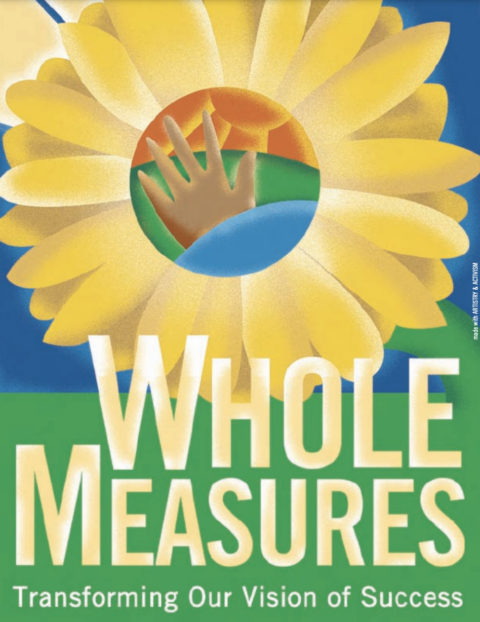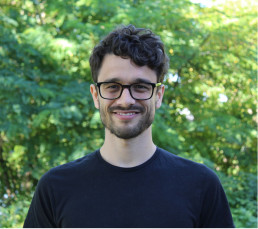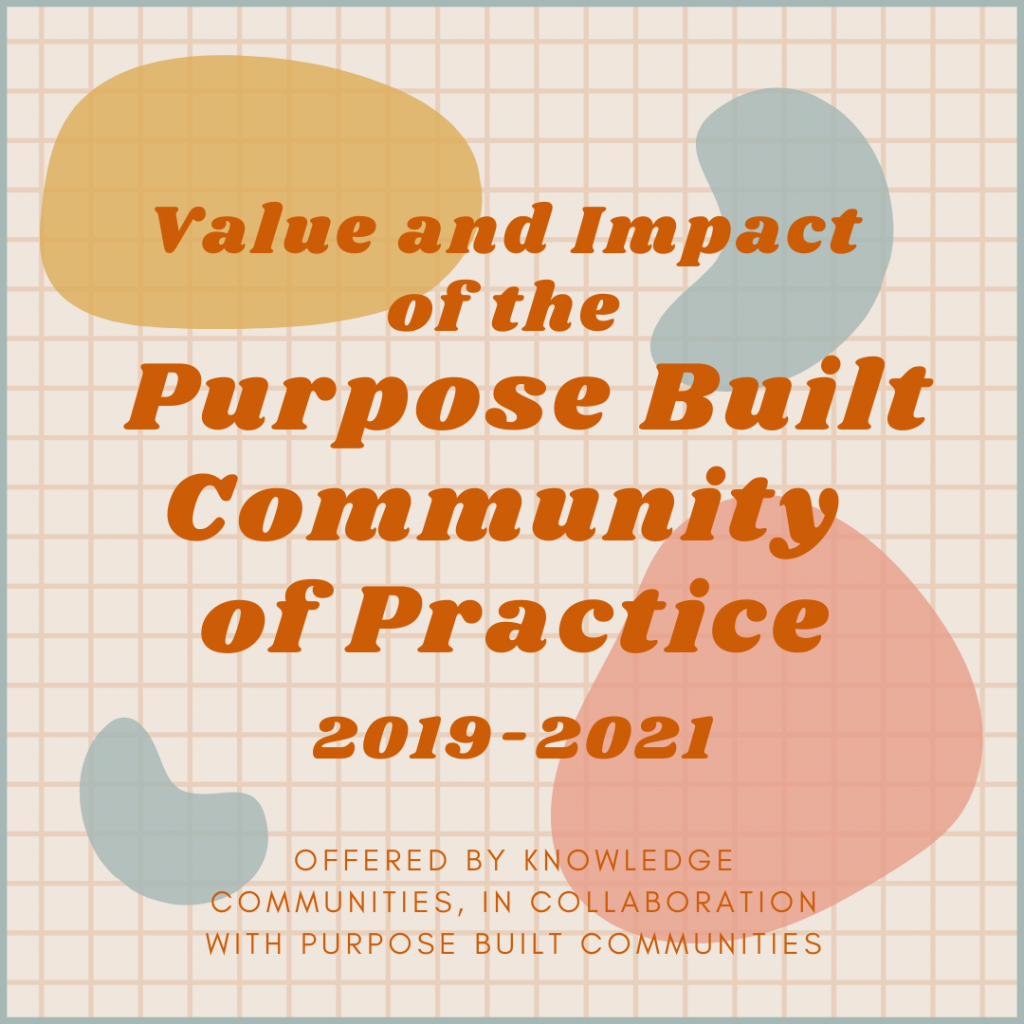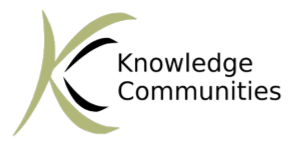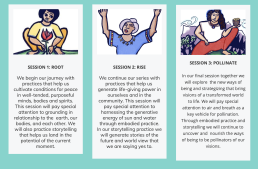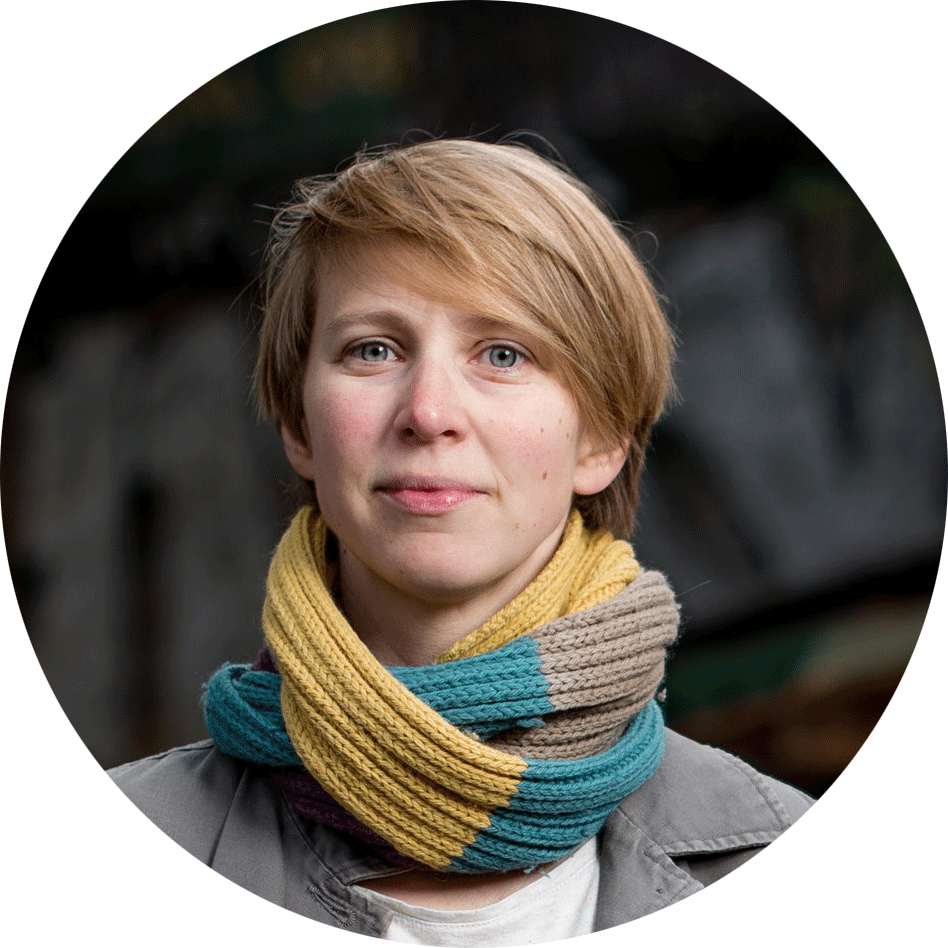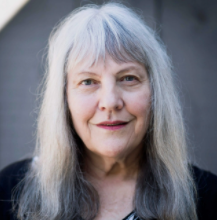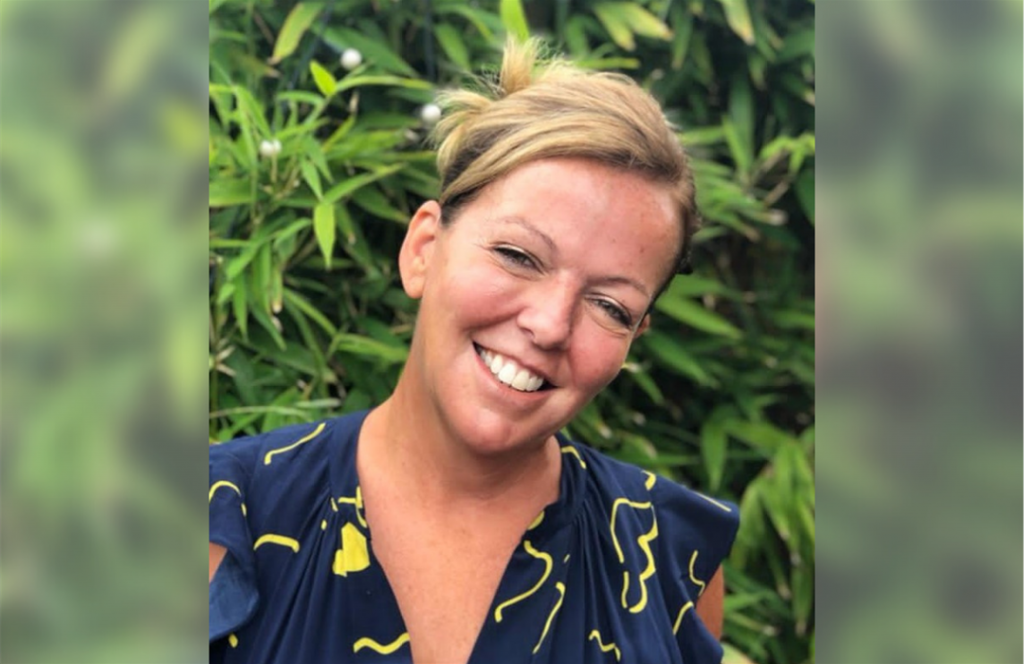Into the Matrix and Beyond: The Value of Network Values and Values-Focused Processes
January 18, 2022The Big Picture,Blog,EquityCommunity,Network Building,Network Value
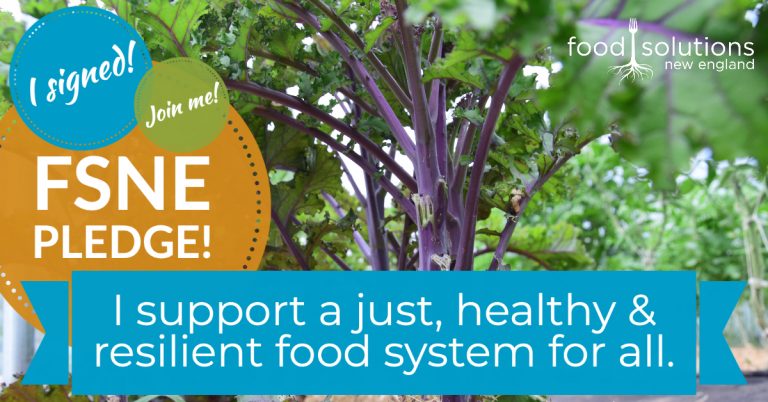
A couple of years after the Food Solutions New England Network officially published the New England Food Vision, and just after the network formally committed to working for racial equity in the food system, it formally adopted a set of four core values. On the FSNE website, a preamble reads: “We collectively believe that the food system we are trying to create must include substantial progress in all these areas, alongside increasing the consumption of regionally produced foods and strengthening our regional food economy and culture.” The four values are:
Democratic Empowerment:
We celebrate and value the political power of the people. A just food system depends on the active participation of all people in New England.
Racial Equity and Dignity for All:
We believe that racism must be undone in order to achieve an equitable food system. Fairness, inclusiveness, and solidarity must guide our food future.
Sustainability:
We know that our food system is interconnected with the health of our environment, our democracy, our economy, and our culture. Sustainability commits us to ensure well-being for people and the landscapes and communities in which we are all embedded and rely upon for the future of life on our planet.
Trust:
We consider trust to be the lifeblood of collaboration and collaboration as the key to our long-term success. We are committed to building connections and trust across diverse people, organizations, networks, and communities to support a thriving food system that works for everyone.
In the last few years, these values have generated a lot of good discussion, both internal to the network and with others, and we are discovering that this really is the point and advantage of having values in the first place. They can certainly serve as a guide for certain decisions, and in some (many?) instances things may not be entirely clear, at least at first. What does racial equity actually look like? Is it possible for a white-led, or white dominant, institution to embody racial equity? Can hierarchical organizations be democratic? Are there thresholds of trust such that people are willing to not be a part of certain decisions in the name of moving things forward when needed?
Recently, FSNE received an email from a Network Leadership Institute alum who now works as a commodity buyer for a wholesale produce distributor in one of the New England states. They reached out to inquire who else in the network might be thinking about high tech greenhouse vegetable production in the region. Specifically their interest was talking about projects that use optics of being “community based,” but are financed by big multinational corporations. “What would a “just transition” framework look like in the context of indoor agriculture,” they wondered, especially in light of undisclosed tax deals happening as the industry rapidly grows.
As it turns out, a public radio editor recently reached out to FSNE Communications Director, Lisa Fernandes, about pretty much the same thing, also referencing other similar projects taking root in different parts of the region. What does FSNE think of these? Part of her response was that there are some good questions that not only the New England Food Vision (currently being updated), but also the Values, can raise to evaluate the potential role of some of these more tech-heavy food system projects and enterprises as the region strives to be more self sufficient in its food production. And this conversation is certainly growing.
These exchanges in our region have had me thinking about work colleagues and I have been doing with food justice advocates in Mississippi. A central part of this also lifts up values as being key to establishing “right relationships” between actors in the food system, and also between advocates and partners (including funders) from outside of the state. I have learned much from Noel Didla (from the Center for Ideas, Equity, and Transformative Change) and her colleagues about the importance of establishing what they call “cultural contracts,” which create a foundation of values-based agreements as a way of exploring possibilities for authentic collaboration. The signing of any contract is just a part of a process of ongoing dialogue and trust building. For more on these contracts and culture building, see the recording of a conversation Karen Spiller and I had with Noel and other Mississippi food system advocates during the FSNE Winter Series earlier this year in a session called “The Power of the Network.”
“Daring leaders who live into their values are never silent about hard things.”
Brene Brown
In a different series of workshops with those same Mississippi-based advocates, we introduced a values-focused tool from the PROSOCIAL community. PROSOCIAL is rooted in extensive field research (including the commons-focused work of Nobel Prize winning economist Elinor Ostrom) and evolutionary and contextual behavioral science. PROSOCIAL offers tools and processes to support groups in cultivating collaborative skillfulness and the critical capacity of psychological flexibility, including the application of Acceptance and Commitment Training/Therapy (ACT) techniques.
The ACT Matrix (see below) is something that individuals and groups can use to name what matters most to them (their core values), along with aligned behaviors (what are examples of living out these values?), as a way of laying a foundation for clarity, transparency, agreement, support and accountability. The Matrix also helps people to name and work with resistance found in challenging thoughts and emotions that might move them away from their shared values. The upper left quadrant is a place to explore what behaviors might be showing up that move people away from their stated values. In essence, this helps to both name and normalize resistance and when used with other ACT practices (defusion, acceptance, presence, self-awareness), can encourage more sustainable, fulfilling (over the long-term), and mutually supportive choices.
An additional values-based tool we have lifted up both in New England and in our work in Mississippi is Whole Measures. Whole Measures is a participatory process/planning and measurement framework from the Center for Whole Communities). There is both a generic version of this framework, as well as one specifically focused on community food systems (more information available here). As CWC points out, “How the tool or rubric framework is used, how the community engagement is facilitated, who is represented in the design matters.” Whole Measures is about content, yes, and it is meant to be used for ongoing deep dialogue, especially amidst complexity, diversity and uncertainty, and when faced with the challenge of tracking what matters most that can also be difficult to measure.
When it comes down to it, these times seem be asking us what kind of people we really are and strive to be. As the old saying goes, “If you don’t know what you stand for, you’ll fall for anything.” And so the work of values identification and actualization is of paramount importance. I’ll leave it to the poet William Stafford to appropriately close this post with his poem, “A Ritual to Read to Each Other” (something we often share with social change networks as we launch, especially the first and last stanzas):
If you don’t know the kind of person I am
and I don’t know the kind of person you are
a pattern that others made may prevail in the world
and following the wrong god home we may miss our star.
For there is many a small betrayal in the mind,
a shrug that lets the fragile sequence break
sending with shouts the horrible errors of childhood
storming out to play through the broken dike.
And as elephants parade holding each elephant’s tail,
but if one wanders the circus won’t find the park,
I call it cruel and maybe the root of all cruelty
to know what occurs but not recognize the fact.
And so I appeal to a voice, to something shadowy,
a remote important region in all who talk:
though we could fool each other, we should consider—
lest the parade of our mutual life get lost in the dark.
For it is important that awake people be awake,
or a breaking line may discourage them back to sleep;
the signals we give — yes or no, or maybe —
should be clear: the darkness around us is deep.
Curtis Ogden is a Senior Associate at the Interaction Institute for Social Change (IISC). Much of his work entails consulting with multi-stakeholder networks to strengthen and transform food, education, public health, and economic systems at local, state, regional, and national levels. He has worked with networks to launch and evolve through various stages of development.
Originally published at Interaction Institute for Social Change
featured image found here
Jannik Kaiser
Jannik Kaiser is co-founder of Unity Effect, where he is leading the area of Systemic Impact. His desire to co-create systemic social change led him down the rabbit holes of complexity science, human sense-making (e.g. phenomenology), asking big questions (just ask “why” often enough…) and personal healing. Having worked in the NGO sector, academia and now social entrepreneurship, his most formational professional experiences were:
Funding networks: Answering the what, why, and how
January 11, 2022Blog,Fundingfunding
Networks often require donor funding to undertake activities to achieve their visions and missions. But, as we so often hear in our work with networks, mobilizing and managing adequate funds pose a host of challenges, both for networks and their donors. And, given the paucity of existing research, the fundamental questions of what, why, and how donors fund networks are as yet broadly unanswered.
Collective Mind recently completed the first phase of a participatory research study that engages both networks and donors to better understand donor funding to networks. By shedding light on these key questions, the study seeks to improve donors’ funding approaches with networks and to inform networks’ fundraising strategies. The first phase of our study included collecting responses from both networks and donors to an initial survey and reviewing the limited related evidence base. Our findings from this phase – outlined below – will inform the next steps of the research.
The what, why, and how of donor funding to networks
Based on survey responses and our review of the literature, practical challenges seem widespread. While many networks receive project or programmatic funding, these types of funds are generally mismatched to networks’ needs. A focus on outputs limits the ability of networks to cover their core functions like serving and engaging members. Appropriately funding networks requires funding processes – for communication, dialogue, exchange, co-creation, and collaboration – not necessarily funding specific projects. Networks require funding for developing network infrastructure and shared resources, member facilitation, convenings, communications, measurement and learning, general operations, facilitation, research, and more. In general, networks typically need more general flexible support that covers staffing costs – but struggle to find it.
Other practical challenges arise as a result of the sometimes-amorphous organizational status and limited capacity that networks often have. Networks without legal status or a central governance or management mechanism may limit their options for funding. Channelling funds through intermediaries as an alternative brings other administrative challenges. Likewise, networks often lack the capacity for grant/proposal writing and reporting and may not be able to meet strict financial and administrative requirements or follow related procedures.
These practical challenges, while critical, can be viewed as manifestations of deeper disconnects – between what and how donors fund and what networks need based on what they’re capable of undertaking and achieving. These disconnects can be structural, for example, where donor strategy and operations set short-term funding cycles or limit the flexibility of funding types. They can also reflect a lack or misunderstanding of the nature of networks, how they function, and the specific kinds of value they’re capable of creating by facilitating and coordinating members towards defining shared goals and taking collective action.
Non-project-based types of investments in networks might not align with donor goals or their needs to see a direct return. Similarly, donors often struggle to understand how their funding can help to support network development and improvements. As noted elsewhere, even understanding what a network’s capacity may be as a baseline to build that capacity can seem daunting. Measuring a network’s health and determining its potential for sustainability likewise require custom frameworks and tools grounded in network expertise. Furthermore, the nature of networks and how they create change defines how we can describe their impacts and measure success. The nonlinear nature of the value creation of networks – for which progress is often intangible – creates challenges for identifying, tracking, and monitoring outcomes and impacts.
Critically, myriad complications arise about the role(s) that donors should play when investing in a network. Networks and donors struggle with the challenge of donor influence that shifts the priorities of the network, lessens ownership, or creates conflicts. It is often unclear how a donor can fund without biasing the structure and direction of a network (particularly for nascent networks), either intentionally (e.g. by demanding changes to obtain funding) or unintentionally. Donors may also underestimate the range of roles they can play not just as a funder but as a member or supporter in other ways (such as connecting the network to other resources, partners, etc.).
Answering the pressing questions
These key findings are the starting point for our next steps. They will shape the templates against which we co-develop case studies on both networks and donors about their funding to deepen our understanding of the interconnected issues and develop cross-comparative analysis. Through these next stages of the research, we hope to answer questions from the most practical, such as whether networks should register as legal entities to increase their funding options, to those of the highest order – as to whether the philanthropic funding model for networks needs to be recreated.

Kerstin Tebbe is the Founder of Collective Mind.
Kerstin has 18 years of experience supporting networks and multi-stakeholder collaboration. Her passion for networks was ignited by 6.5 years (2008-2014) spent on the Secretariat for the Inter-Agency Network for Education in Emergencies (INEE) where she coordinated an international technical working group, established a pan-African knowledge hub, and served as Deputy/Acting Director of the network.
Interested in participating in our research and developing a case study of your organization? Get in touch at kerstin@collectivemindglobal.org.
Originally published at alliancemagazine.org
featured image found HERE
Value and Impact of the Purpose Built Community of Practice
January 3, 2022Dismantle Racism,Blog,Equity
Knowledge Communities, in collaboration with Purpose Built Communities, have released a white paper (that you can download below) telling the story of Purpose Built’s successful and compelling journey to adopt and implement a Community of Practice (CoP) strategy to support neighborhood revitalization and racial equity. Specifically, the paper describes the Purpose Built CoP startup process, the status of the Purpose Built CoP as of early 2021 and success factors to date. Finally, the paper contains an appendix of tips for practitioners who support and manage CoPs and networks.
- Read about how the Purpose Built Community of Practice (PB CoP) successfully supported a network of change makers across the country during COVID and continues to support them on an ongoing basis today.
- Learn some practical strategies you might want to adopt as you build a community of practice.
- Understand why the PB CoP exemplifies best practices from which many can learn.
Communities of Practice bring together professionals who share a common set of challenges (e.g., Purpose Built Network leaders focused on place-based community development) on an ongoing basis to collaboratively solve problems and learn from each other.
Article Summary
Purpose Built Communities brings together Network Members — leaders and staff of organizations working to improve equity and opportunity in neighborhoods across the country — in a networked Community of Practice (CoP) structure. Knowledge sharing and collaboration helps local leaders in the Network tackle the complex challenge of intergenerational poverty to achieve racial equity, improved health outcomes and upward mobility for residents.
In 2019, with the generous support of the Robert Wood Johnson Foundation, Purpose Built Communities began moving from a hub-and-spokes structure (with Purpose Built serving as the hub), to a Community of Practice, also known as a networked model.
The Purpose Built Community of Practice stimulates problem recognition, and the creation, exchange and application of innovations to serve place-based neighborhood revitalization that moves people out of poverty.
The CoP’s structure and interactions help Network Members:
- Build stronger relationships with supportive peers
- Accelerate knowledge sharing
- Respond rapidly and flexibly to changes in circumstances
- Shorten learning curves to gain skills and expertise fundamental to Network Member excellence
- Successfully implement the Purpose Built Communities model
- Make informed decisions that create stronger outcomes
For more information, read the full white paper, “Value and Impact of the Purpose Built Community of Practice: 2019-2021″
Access the paper by downloading the resource at Network Weaver HERE or at Knowledge Communities's website HERE.
The mission of Knowledge Communities is to create environments that optimize:
- Trust building
- Collaboration
- Synergy
- Knowledge Sharing
- Generative Behaviors
- Harness the productive dimensions of power and competition in the service of improving lives and bettering the world we live in.
Originally published at Knowledge Communities
Waging Peace with Fierce Love : a 3-Part Workshop Series for feminist changemakers
December 30, 2021Blog,Transformation
What will it take to transform conflict, to ensure our movement building and changemaking is fueled by fierce love over fear? How can we resource ourselves and each other with transformative, life-giving power?
This three part workshop series is an opportunity for feminist changemakers to explore how to root, rise, and pollinate the new ways of being necessary to wage peace, transform conflict, and strategically bring to life our visions for a transformed world.
The three sessions are part of the whole, and are intended build on each other.

These sessions will create a welcoming and grounding embodied practice space to help changemakers root in and remember our personal and collective purpose, identify habits to interrupt, and sustain generative power.
They build on the kitchen-table chat and embodied practice session we held earlier in 2021 with feminist changemakers from around the globe, Waging Peace with Fierce Love.
Recordings of the sessions will be available
Wednesdays in 2022 - January 26 & Feb 2 & 9
For more information and to register, CLICK HERE
visit rootrisepollinate.us and ig @rootrisepollinate to stay tuned?
Transforming Impact : how evaluation and impact are shifting
November 22, 2021Blog,Transformation
Given the complexity and depth of the world’s problems, evaluation theories, practices and processes are shifting to better respond to that complexity. The argument goes something like this: problems in our world are increasingly complex, current approaches that fund individual projects (requiring clear outcomes, and evaluating progress towards those outcomes) have actually inhibited the kind of innovation and transformation needed to completely shift the many interrelated systems that make up our world. This means concepts such as evaluation and assessment of impact need to shift as well.
On November 10th, a panel of 8 great minds had a dialogue on the ways that impact measurement and evaluation are shifting.
The panelists were.
- June Holley, Network Weaver
- Glenn Page, SustainaMetrix
- Motaz Attalla, Garfield Foundation
- Charles Kojo Vandyck, West Africa Civil Society Institute
- Gurpreet Singh, Skoll Foundation
- Mark Cabaj, From Here to There
- Liz Weaver, Tamarack Institute
- Habiba Nabatu, Lankelly Chase Foundation
Below is a link to a video the dialogue:
Key takeaways from the session were:
Some of the key themes
- Insights and breakthroughs come from investing proper time in reflection and learning, which we're not currently doing.
- Power dynamics are embedded into evaluation systems through inflexible questions which signal a lack of trust. The process needs to be more participatory since it oftentimes stands in contradiction to an equity approach.
- We need to continually ask: is this process community owned and run?
- We need to make public the wild assumptions that sit behind cause and effect paradigms.
- Though conversations are becoming more progressive, the practices don't yet reflect this.
Beacons of good practice
- Having a vision as a north star
- Slashing indicators as key questions in application forms
- Prioritising learning and quantifying instead of impact measurement
- Shifting the work to the funder, eg. taking responsiblity of finding out what grantees are doing by what's been reported online
- Decentralizing impact analysis & decision-making through lean and frequent mechanisms
- Making data openly available so people can review and assess as they please
Some nice quotes
- "Indicators will shift because life happens" (Motaz, Garfield Foundation)
- "Learning is how we shift, adapt and change in real time" (Liz, Tamarack Institute)
- "I've never seen people read M&E reports and be inspired...we need to use stories" (Charles, WACSI)
- “We need to get rid of ‘zombie’ practices – those that are dead but still being used” (Mark, From Here to There)
- "The best learning happens in learning communities" (June, Network Weaver)
We'd also like to share a chart that summarizes how evaluation and impact assessment are shifting. It's a work in progress so please feel free to add comments and suggestions using the comment feature.
If you're interested in being engaged in further impact initiatives with us please fill in this 60 second survey.
If you'd like to keep the links to the video and chart offerings on file, download the free resource HERE.
Converge Announces New Opportunities to Learn about Impact Networks
November 17, 2021Uncategorized
Attention Network Weavers: Are you eager to learn more about forming, leading, or revitalizing networks for learning and action?
Converge is pleased to announce open registration for three learning opportunities:
- Introduction to Impact Networks, a 45-minute webinar: Dec. 2 or Jan. 17
- Network Essentials, an interactive 3-hour workshop: Dec. 10 or Jan. 14
- and Network Leadership Series (NLS), a network practice cohort which includes 8 sessions over 2 months starting November 30.
Details and registration for all offerings can be found on at converge.net/trainings.
Since learning is best with peers, we encourage you to bring two or more people from your network or organization – and we offer a discount for registering more than one participant. Discounts and scholarships are available for those who want to participate but money is an issue.
What are these trainings about? Impact networks bring diverse stakeholders together for collaborative learning and action to advance a shared purpose. Converge believes in the power of networks to create systemic change in a world of complexity and continual change. We seek to advance the field by supporting and connecting those who lead and coordinate impact networks.
Our trainings are based on a co-learning approach. We’re committed to:
- Meeting people where they are, recognizing that network leadership involves ongoing deepening of self-awareness and systems awareness.
- Making learning actionable, sharing concepts with interactive opportunities for participants to apply them to their real-world challenges.
- Sharing practical tools that have evolved through Converge’s collaborations with a variety of networks across the globe.
- Drawing on everyone's wisdom, creativity, curiosity, and generosity.
- Embracing diverse learning styles and ways of knowing that integrate thinking, feeling, and doing.
If our approach resonates with you, we hope to see you at a future training!
About Converge: We are a network of practitioners who cultivate impact networks. We are systems strategists, designers, facilitators, educators, and evaluators committed to co-creating positive impact by advancing the network approach to collaboration. Learn more at converge.net.
Governance – the overlooked route to transformation: How can we best organise for change?
November 15, 2021Network Structure and Governance,TransformationBlog,equity,Systems Change,Governance,Collaboration
What are the current governance approaches and ways of organising that are being used in attempts to create systems change? What would more systemic governance approaches for our work look/feel like and how might we transition to these?
Part one in a series of four exploring the future of how we govern and organise. Co-written by Sean Andrew, Louise Armstrong and Anna Birney
“Every attempt to write a new human story converges upon just one mundane, heartbreaking problem: How shall we come together, work together, create together? How shall we organise?”
Nilsson, Paddock and Temmink, 2021, Changing the way we change the world (Draft manuscript)
At the heart of change is how we think, relate and act. While these ways of being weave in and throughout our ordinary everyday experiences, they are not always given the intention and continuous attention they need. We believe how we relate, work together, and organise are cornerstones of change making. How we find ways to bring awareness to these elements really matters, and is easier said than done. They need just as much attention as the structural shifts that are required in the coming decade.
With this in mind, we are exploring governance as the place of untapped potential that can enable transformation today and into the future.
We’re defining governance as: The forms, structures and social processes that people and institutions use to create and shape their collective activities.
As such, we, and many others we’re working with and are inspired by (Beyond the Rules, The Hum, Reinventing Organizations, Going Horizontal, Practical Governance, Organization Unbound, Lankelly Chase, Shared Assets, Patterns for Change, Leadermorphosis and Barefoot Guide Connection, to name a few) are calling for governance approaches that reflect systemic principles that are suited for complex adaptive systems. Many of those we’ve listed are experimenting with elements of this, each adapting these to their contexts like Transition Movement and their shared governance approach, or CIVIC SQUARE, who are applying their mission and values into the organisational structures and processes – from how they do recruitment through to how they do financial planning.
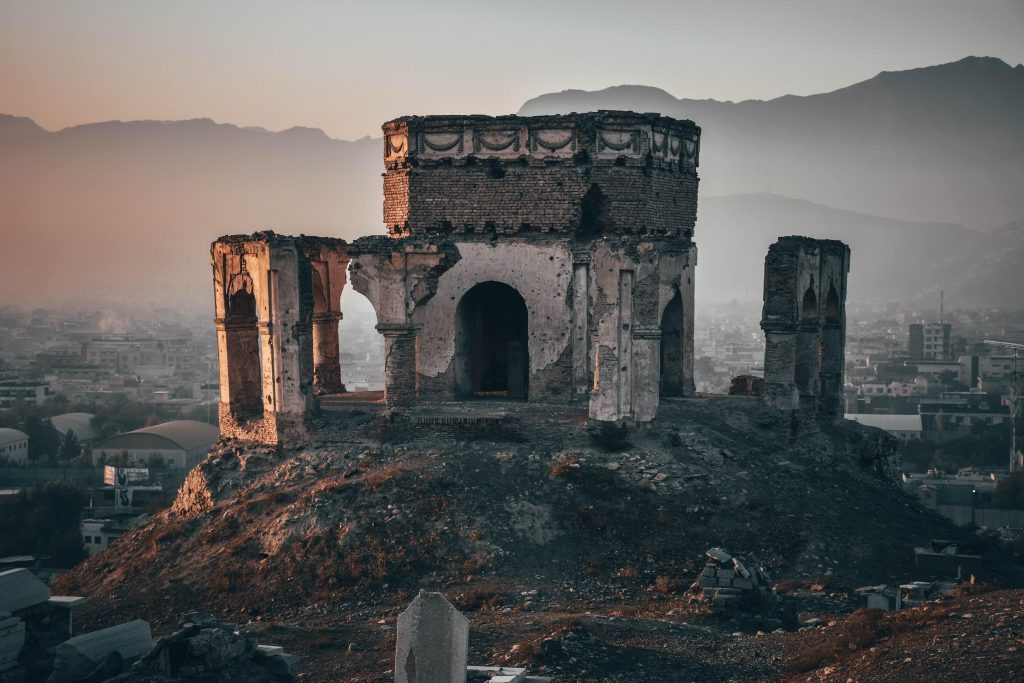
We’re increasingly noticing internally, through our own organisational experience at Forum for the Future, and through our systems change strategy, collaboration and coaching work with others, that many of us subscribe to dominant forms of governance that are designed for a complicated, not complex world. We’ve noticed that sometimes, without intention, our own patterns of organising and those of many of our partners are perpetuating the structures, dynamics and patterns we are trying to shift. For example, we take centralised or hierarchical decision making approaches even though we want to enable greater ownership over a project which can come through taking advice-based decision making approaches where those closest to the challenge are part of the process.
Systemic governance on the other hand enables self-organisation (how a group of people organises their time, attention and resources in ways that meet the urgent necessity of the moment). It cultivates the emergent practices (and enables new system patterns) that help us align to regenerative and distributive approaches that better mimic our living systems.
Our inquiry into governance
After exploring new forms of organising, over the last 18 months at Forum we have been exploring two governance inquiry questions:
- What are the current governance approaches and ways of organising that are being used in attempts to create systems change?
- What would more systemic governance approaches for our work look/feel like and how might we transition to these?
To respond to these questions, we’ve been reflecting on our own organisational life while also learning from current and past collaborations we’ve convened or participated in over the past decade.
What is governance?
So how do people understand governance in their context? Through our inquiry we found that peoples’ understanding and expression of governance varied and was even sometimes quite vague. While governance meant different things to people, depending on their role or context, the people we spoke to talked about it in a few distinct ways, the ‘elements of governance’.
Elements of systemic governance
Systemic governance has both soft and hard elements.
Part of the reason why we tend to think of governance as a fixed process is that we often associate it with a few rigid components. From this exploration we realised that governance is in fact made up of a whole spectrum of elements, which while distinct, together create a unique governance context you may find yourself within, be that in an organisation, a movement, a collaborative endeavour, a community or really any place where people come together to organise something. By naming a spectrum of elements it expands the view of what governance is and how these parts form a tapestry.
We’ve created the figure 8 (below) as a summary of what we’ve heard, recognising that one way of distinguishing these elements is looking at the ‘hard’ or ‘soft’ elements. While the hard and soft elements can sometimes feel in tension with each other – they are in fact interdependent and together they form part of the governance landscape we have to traverse together;

In reality – we recognise these elements can be interchangeably hard/soft and are in symbiosis. Some will be visible and explicit and others invisible and implicit, depending on the context and people’s experience. For example, a “hard” element such as finance might actually be very hidden in an organisation without financial transparency or a “soft” element such as communication and transparency might be experienced overtly as lacking and be a visible gap in ways of working.
Innovating the hard and visible elements of governance
Most of the governance approaches we explored focused on the hard and often more visible, explicit structural elements of the organisation. These seemingly felt easier to figure out with clear problem > solution tactics. For these hard, visible structural elements of governance, people talked about inherited “best practices” that often took the form of compliance protocols. When working systemically, challenges can come when the ‘hard’ or ‘visible’ parts of governance are too rigid and fixed. We found that people working on complex challenges were often bound by these constraints and were yearning for ways to disrupt, reimagine, and innovate these ‘hard’ elements.
One hypothesis we are working with is that the hard stuff (the what) can be a transitory tool and a trojan horse for prioritising the soft stuff (the how).
The soft, invisible elements are the hardest part of governance to shift
The “soft” elements of governance are the implicit less formal cultural components of how people relate and organise. It’s often less tangible and thus harder to shift. Systemic governance is a constant practice of probing, sensing and responding to the dynamic nature of these elements in changing contexts. We found that these elements are too often submerged and therefore if we want to develop resilient adaptable governance approaches we need to bring to the surface and made explicit the soft cultural elements. While these elements are often deprioritised as they are unseen, they are still aspects of governance that materially impact the lived experience of people working within different organising forms.
Why is it so hard to work with the softer issues? The nature and quality of our relationships is the foundation of any governance. Questioning, challenging and reconfiguring established relationships is hard. It can take difficult conversations and processes to bring in different perspectives and overcome unhealthy power dynamics. Bringing self-awareness, paying attention to relational dynamics, creating space to listen and honestly share and transparent communications are the starting points.
Reframing governance as a journey
We heard people thinking about governance as putting structures and processes in place and thinking the rest will follow. Any of the words and connotations people mentioned pointed to governance as something that is fixed and hard, a static thing you set up on a one-off basis when in fact governance approaches are alive, can be enabling and need to be seen as a constantly evolving journey. We’ll explore some more of these governance myths in the next blog piece.
Sign up for the newsletter to get the next blog piece directly to your inbox.
Governance as an overlooked intervention or leverage point for change
These elements of governance play out in all of the many ways when we come together – be that in a multi stakeholder collaboration, across teams or functions in a large organisations, in communities, within networks or distributed movements. Governance is central to any form of organising or organisation creating change. We need to support others to imagine and implement new governance approaches that demonstrate and model how we can operate systemically, as a fractal of the change we are cultivating in the world.
What next?
We offer this figure 8 framework as a way to open up a different conversation about governance and acknowledge it is just one framing. We’d love to know if this resonates with your experience and how the challenges of hard and soft elements play out for you?
We’ll be writing two more pieces in this series. One to explore some of the governance myths we’ve been uncovering through our inquiry (e.g. governance helps us control things). And a second to dig deeper into some of the core systemic governance elements you might start to pay attention to now as critical yeast to influence your organisational practices and experience.
In 2021, we’re starting to explore some of these ideas with fellow travellers who have similar experiences in their context. If these ideas resonate with you or you want explore them more – get in touch with Sean s.andrew@forumforthefuture.org or Louise l.armstrong@forumforthefuture.org
Background context
At Forum for the Future, our governance inquiry is one of our three live inquiries (power, governance, regenerative) we’ve been exploring over the last 18months. This inquiry approach supports our aspiration to be a learning organisation that keeps questioning the assumptions nested in our purpose and supporting structures, processes and practices. Our belief is that these inquiries are helping us continuously become a system-changing organisation that is using our own experience as a site of learning, and as an expression of the change work we’re trying to do in the world. This inquiry has been greatly inspired and supported by those in the field who have been, and are, experimenting with ideas and approaches to governance. This piece is part of our ongoing Future of Sustainability series. In 2021 we’re exploring the narratives and practical interventions needed for transformation in the coming decade.
Read next:
- Exploring transformational governance together Governance can be transformational. When we set our sights on changing the world, we also know that governing well goes beyond preparing our own organisation, network or movement for the future. How do move beyond tweaking the way things currently work and apply governance to transform the ‘systems’ that operate in our society that maintain injustice, oppression and inequality (such as race, patriarchy and class)? (PART 2/4)
- Reimagining governance myths Part three in a series of four exploring the future of how we govern and organise. This piece looks at how people think governance happens today and challenge five commonly held governance myths. (PART 3/4)
- The governance flywheel In this final installment of our series on governance, we introduce the “governance flywheel”1 which highlights three fundamental linked areas that if they are deliberately seeded and nurtured, individually and together, can create the momentum needed to cultivate and grow healthy governance systems. (PART 4/4)
Originally published at Forum for the Future
An enabling, empathetic and courageous leader. I questions and challenges the way things are done, models what is possible and enable others to do that too. Sees potential and nurtures it in people and ideas. Living change while knowing how to strike how to strike the balance between adventure, rest, work and care and nurturing.
For another way of thinking about governance alternatives see Resonance Network's post and media toolkit : THIS IS HOW #WEGOVERN
Explicitly Building a Periphery for Your Network
A number of my writings have outlined strategies for weaving a network, but none have detailed the importance of and processes involved in building a network periphery. This blog post will guide you, step-by-step, through a process you can use with participants in your network.
First a definition. A periphery consists of people who are not part of the everyday operations of your network. Usually only a few people at most have connections to individuals in your network’s periphery.
In the drawing below, the grey dots around the outside of the network represent the periphery.
Why is spending time building a periphery so important?[ap_spacing spacing_height="10px"]
- A periphery can provide pathways for new people to easily join your network, thus enabling your efforts to continually expand, reach new people and increase your impact. This is especially important if you have noticed that your network is disproportionately white or western, and your network wants to become more inclusive and welcoming to all.
- A periphery can connect you to other networks.
- Connections to other networks can increase your efforts to integrate and aggregate with the efforts of other networks working on the same or similar systems. For example, if you are a network working on climate change you may want to connect with other climate change networks who are trying to get new policy enacted.
- A connection to networks I call provocative networks can enable people in your network to examine their assumptions and take off blinders engendered by dominance culture. For example, many networks are connecting to anti-racism networks to help them examine and dismantle racism within their network.
- A connection to networks working on other systems can help your network stay in touch with the big picture and how other systems are impacting the system you are focusing on.
- A periphery can connect your network with others working on building the ecosystem of support needed for transformative networks:
- communications ecosystems and protocols for sharing learnings
- pools of resources restructured to support self-organizing
- pools of facilitators (network activators and catalysts, network weavers, learning weavers, culture workers, etc) that can be accessed by all networks
- learning communities
- shared resources such as handbooks, research, etc and a system for curating and creating new knowledge. [ap_spacing spacing_height="7px"] International co-design groups are forming around these ecosystem elements, with people from several dozen networks participating in the development processes, though the resultant support ecosystem will be accessible by all networks. (Let me know if you are interested in working on this.)
- A periphery can help your network and network participants access expertise. Whether it’s organizational expertise, expertise on running an effective network, or expertise connected to your network’s purpose, your network can benefit from having connections to experts who, in many cases, might be willing to provide pro bono or lower cost services to the network or its participants.
- A periphery can help you and your network participants access new resources. Yes, we all want connections to more funders who will support our work, but there are also other kinds of resources that our networks and organizations might use that are only a step away: meeting or work space (assuming the pandemic ever ends), food, spaces for retreats, volunteers, etc.
How to assess and enhance your network’s periphery
Step 1. Inform and Recruit
- Share this blog post with as many people in your network as possible, explaining why you think this activity is important to your network and then ask people if they are interested in being part of one or two sessions to expand the network’s periphery. Be sure to explain how much time this might involve.
- Do a short virtual session on the topic ending with a call for volunteers.
Step 2. Convene
- Find several people with strong facilitation skills to help you plan and implement the session.
- Set and time and date and then send out an invitation to everyone in the network. (Using breakout sessions you should be able to easily handle many many participants so don’t worry about a huge response!). You might want to do targeted recruitment for people who have strong personal networks in each of the five areas listed above.
- Decide which of the five aspects of peripheries listed above is the highest priority for your network, as each one will take an hour or two to work on. You may decide to meet once a month for five months to work on all of them.
Step 3. The Session Process
Let’s look at the first two aspects. You can use similar processes for the rest. The key is to use a whiteboard type tool - jamboard (one of the google doc types), Miro, or the whiteboard on zoom - or even a google doc. Depending on the size of your group, you can work as a single group (if less than say 15) or move people into breakout rooms where they each work on a particular aspect. Make sure contributors give names of a contact individual, organizational name if applicable, and contact information (email probably best). In addition, it’s critical that the person who puts down a name add their name if they know the person named well enough to initiate a connection.
- A recruitment periphery. Here you are trying to build more or less permanent pathways into new communities so you can attract many more people into your network.
- Where do you want to recruit? Are you a national network who wants to bring more local groups, organizations or individuals into your community? If so, you will need to capture names and contact information for local groups that your network participants know. [ap_spacing spacing_height="10px"] If you are trying to increase the engagement of under represented groups, you may need to spend more time doing groundwork: start by building relationships with a small number of people from those communities, making sure they find benefit from involvement in your network, especially by becoming part of projects that bring their communities more resources. Only then does it make sense to invite them to a session such as we are describing. [ap_spacing spacing_height="15px"]
- Once you have identified key individuals and organizations, you need to work on relationships and pathways. Can you have current network participants volunteer for these organizations? Can you have listening sessions to hear what people from these communities need and discuss how the network can help them? How can your network share useful information about the network with people in these communities so they know how to pull into the network and its opportunities? Will the new groups put this information in their newsletter or share it on social media (and vice versa)? What trainings or projects are they interested in?[ap_spacing spacing_height="15px"]
- People in your current network may work with folks in these communities on specific collaborations - and then make sure these collaboratives share back with their community on the successes (and struggles) they experienced so more people will get interested in being part of the network.
- A network of networks strategy.
- Have participants list the names and contact information for networks to which they think their network needs to be connected. Then have a go-round where people explain why they suggested that particular network. [ap_spacing spacing_height="7px"]
- Then have participants (altogether or in breakouts) discuss how they might reach out to these networks. Some of the options you might suggest are:
- Having an introductions session where people from 3-10 networks get to know each other by sharing their role in their network, personal interests, and other personal information. [ap_spacing spacing_height="10px"]Have each network share about their network’s strategies, priorities and projects - especially what they are open to working with others on. [ap_spacing spacing_height="10px"]Having heard from others, each person shares what they would be interested in working from the information provided. [ap_spacing spacing_height="10px"] Make sure there is a list of names and emails of the participants so they can contact each other after the session. [ap_spacing spacing_height="15px"]
- Have reps from two networks meet and discuss how they might share information (from enewsletters) and follow each other on social media accounts. They might also discuss how they could support each other’s work and what opportunities they see for future collaborations. [ap_spacing spacing_height="15px"]
- Two or more networks might have a sharing webinar for their networks where they describe current projects and future directions. Small mixed groups might discuss how the networks could work together in the future.
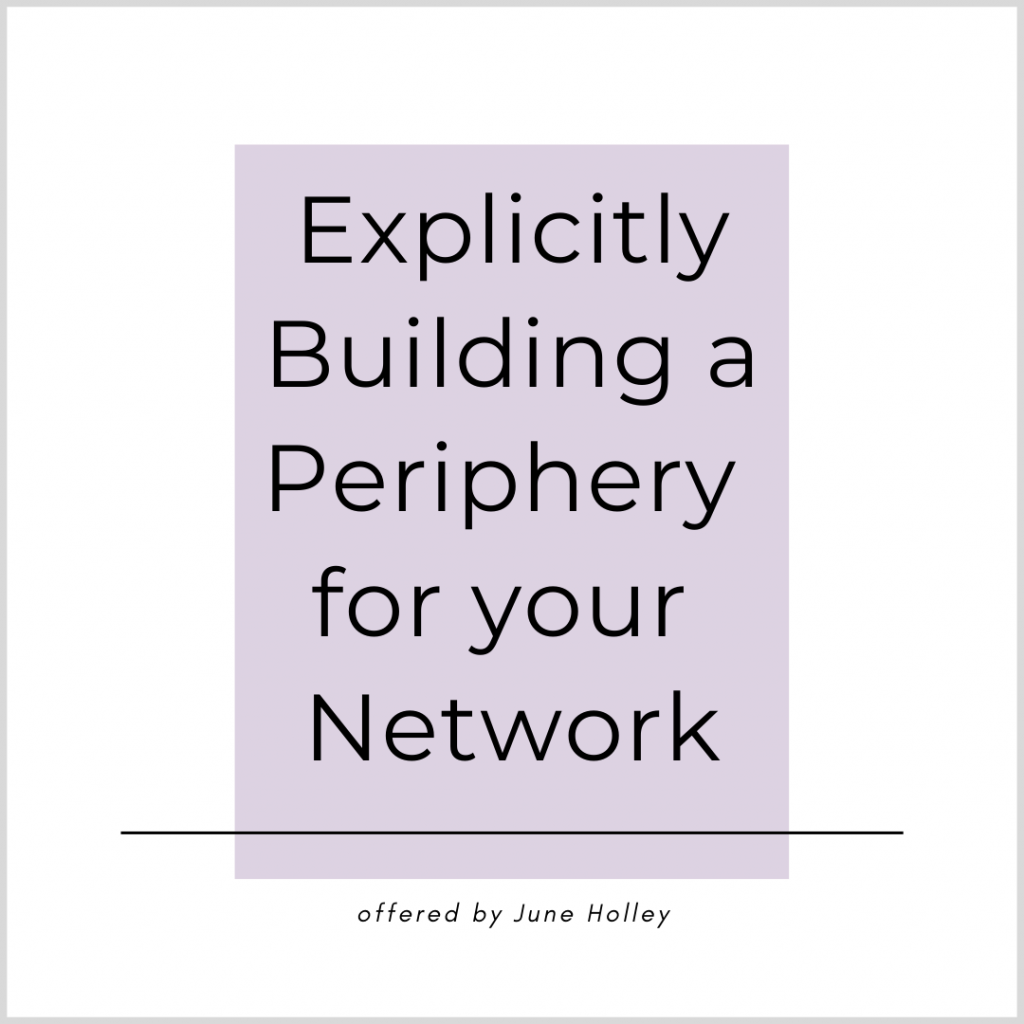
June Holley has been weaving networks, helping others weave networks and writing about networks for over 40 years. She is currently increasing her capacity to capture learning and innovations from the field and sharing what she discovers through blog posts, occasional virtual sessions and a forthcoming book.
featured image found here
2021: deep transformation or shallow change?
November 1, 2021The Big Picture,Blog,Transformation
2021 is pivotal to creating the future we want. We know that we have less than a decade to address the climate crisis, and that the commitments made this year will determine whether that is possible. We also know that we have an unprecedented opportunity to steer the investments that have been unlocked to deal with COVID-19 recovery in order to shape a different economy. This is the moment in time to work in integrated ways across climate, biodiversity and equality to drive transformational change, and to better prepare ourselves for ongoing disruption. But will we take the opportunity?
Forum for the Future’s Chief Executive, Dr Sally Uren, explores what is needed as the sustainability movement hits a vital inflection point.
As the crushing climate, social and biodiversity crises intensify, and the social, political and economic fallout from COVID-19 continues, the world stands at a crossroads. Will we ultimately capitalise on this opportunity for a reset - using the pandemic recovery to lay the foundations for transformative change capable of creating a just and regenerative future? Or will we continue to address the multiple systemic issues we face with small scale, isolated interventions that fail to address the root causes?
Put more simply: will we sow the seeds of deep transformation or continue with shallow change?
Even before the pandemic, the world was beginning to wake up to the urgency of the challenges we face, and the limited window of opportunity to address them. The shock of the COVID crisis has in some ways deepened that urgency. It has shone a light on how interconnected the challenges we face are - and that solutions must simultaneously address not just the climate emergency, but also growing inequality and habitat and biodiversity loss.
In our Future of Sustainability report published in late 2020, Forum called out four possible trajectories forward from the COVID crisis based on the mindsets we have seen proliferate over the past year. One of those trajectories, the Transform trajectory, offers the potential of a world where both people and planet can thrive into the long-term. It’s here that norms and narratives begin to shift to allow the emergence of a different global economy, one that is rewired to deliver to a set of goals much broader than short-term profit maximisation. An economy where businesses are rewarded for delivering solutions to some of our grand challenges, and where philanthropy channels its billions into solving for systemic challenges, not simply plastering over the relentless shocks that come from our collective failure to reconfigure the systems we rely on.
Since we published our report, there have been promising signals that the Transform trajectory is beginning to emerge. Financial firms responsible for $70 trillion are now signed up to net zero targets, with the real progress manifesting in what we mean by ‘net zero’; the EU for example is pushing for these targets to include a just transition Elsewhere, in a move that caught many off guard, the International Energy Agency (IEA), a traditional supporter of the oil and gas industry, has just called for an end to investment in fossil fuels.
These green shoots of deep change are not just apparent in business. The UNDP is urging investment patterns to change such that capital flows into the root causes of our challenges. This involves ‘reframing’ issues, pointing out that a health system designed to promote wellbeing, for example, would look very different from a system designed to treat ill-health. Meanwhile many philanthropic funders are examining how their own practices need to shift to drive more redistributive and regenerative approaches.
These shifts also coincide with a growing acknowledgment among mainstream civil society that the world can’t go back to where it was before. People are mobilising, marching the streets to call time on long-standing ethical, social and environmental issues that have for too long gone unchecked. Many grassroots movements are driving real changes in attitudes to diversity and inclusion.
Promising, but…
This momentum is both encouraging and tantalising, but there remains a real risk of a shallow transition - one where we address some specific problems and their symptoms in isolation, but fail to tackle the root causes; where we tweak around the edges but don’t fundamentally transform our systems. Why? Because there are other versions of our future that are unfolding alongside Transform, and these versions are predicated on the current version of our economy, where power, profit and success are tilted in the favour of the few.
The Transform trajectory is trying to fight through the boundaries of a set of systems, from food to energy to finance. These systems were established to drive economic growth, without proper and due attention to environmental or social value. They are entrenched and have inherent energy that will keep pulling them back to how they were established. All of us in these systems will feel the forces, economic and societal, to push us back to where we were pre-COVID.
Yet now is the moment to push forward, to overcome any desire to go back to what we knew, to work with the activating voices and organisations for change in our systems, to work with the resisting voices to make the case for change and sweep them along with us. Or to leave them behind. It’s also the moment we must all re-examine our approaches, to dig deep and understand what radical disruption and deep transformation – when seen as a doorway to a new world – could offer us.
What will be required to drive this deep transformation?
At Forum, we are calling for three things:
1. A reset of ambition.
Every great movement has a compelling “north star”. The original north star of sustainability was a world where we live in balance with the planet - where both people and planet can thrive.
While the essence of this vision still holds true, the pathways toward that north star have become confused - firstly by the idea that this vision of sustainability is compatible with an economic model that prioritises infinite growth of consumption and production.
And secondly, by the idea that incremental change - tweaking around the edges of our current systems, or simply doing less bad in the world - will somehow get us there.
We need to redefine what we mean by sustainability, pushing our aspiration further. If we are truly to create the conditions in which people and planet thrive, then we need to start to design for a just and regenerative future, and challenge every actor in our economy and society to examine what their role in creating that future looks like.
And we need to recognise that setting our sights on this new north star will mean shifting from the ‘build back better’ response to the economic and social consequences of COVID-19. Instead, we need to be ‘building forward’ - which means fundamental shifts in both what we define as important, and in the goals of our systems. These goals must move away from the current economic model towards a distributive one that has the principles of social equity and a just transition to a zero-carbon future at its heart.
As we approach the defining moment of the climate COP, set to take place in Glasgow later this year, we should also be looking beyond net-zero, and aspiring to ‘net-zero plus’, with a view to addressing planetary health, social equity and the capacity of all our systems to regenerate and thrive
2. A focus on ensuring just transitions
For us to achieve this bold vision, it is clear that the coming decade will require a suite of fundamental transitions in the key systems on which we rely and that these transitions will not succeed unless they address both social and environmental challenges.
The perceived dichotomy in which we could focus only on one or the other, or through isolated initiatives, never rang true, but COVID-19 has now fully exposed it for the falsity it is. The pandemic has brought into stark focus just how interconnected planetary and human health are, and that one simply cannot thrive without the other.
Our transitions must fundamentally tackle the root causes of the structural inequalities we face and ensure disadvantaged communities are actively involved in shaping the future. In the radical transitions we know need to happen across our energy systems, this will not be exclusively about jobs and retraining, but also about shifting how costs, risks and benefits are shared. And of course, we must recognise that this is not just true for energy systems, but also across our food systems and other commodity supply chains.
At the same time, success will require working across historic silos – the boundaries between, businesses and other organisations, sectors and change-actors must come down. Net zero strategies should not just be about carbon outcomes, but equality and livelihoods
3. Building capacity for systemic and joined-up thinking
For all of this to work, and ensure that the changes we seed now are long-lasting, we need to change the way we approach problems and solutions.
We must invest in building capacity among key influencers and change makers for more systemic approaches to problem solving and collaboration. These approaches must recognise the complexity and inter-relationships within our systems. They must help us to look beyond quick fix solutions and to focus instead on the deep levers of change: our views, our values, our mindsets – and how these need to shift to acknowledge the deep interconnections between planetary health, human health and the health of our economy and society.
This will be the ultimate unlock to driving deeper, lasting change.
An overdue reinvention
I began by presenting a question: deep transformation or shallow change? The choices we make, right now, will determine the trajectory we take, and whether or not Transform becomes the dominant version of our future. At Forum, we believe that a shallow transition is not viable; after all, the ultimate costs of shallow transitions will far outweigh those of deep transformation in the long term. Fundamentally, we cannot thrive on a failing planet.
It’s within our grasp to reinvent the way the world works. We’re long overdue in doing it.
Read more:
- The mindset of a good business leader for an inclusive future
- From pioneering ambition to game-changing goals
- More than words on a placard: how do we take ‘systems change’ from idea to action?
Sally Uren is Chief Executive at Forum for the Future with overall responsibility for delivering Forum’s mission to accelerate a big shift towards a sustainable future by catalysing transformational change in global systems. This involves working with leading global organisations, including businesses such as Olam and Walgreens Boots Alliance, Foundations, such as the Laudes Foundation, and membership organisations, such as the United Nations Global Compact, both in one to one partnerships, and also as part of multi-stakeholder collaborations designed to address complex challenges in systems as diverse as food, energy, apparel and shipping.
Originally published at Forum for the Future



